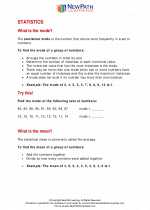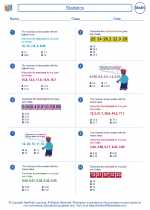Complement Rule
The complement rule is a fundamental concept in probability theory. It states that the probability of an event (A) occurring is equal to 1 minus the probability of the event not occurring.
Formula:
P(A) + P(A') = 1
Where P(A) is the probability of event A, and P(A') is the probability of the complement of event A.
Example:
Suppose we roll a fair six-sided die. The complement rule can be used to calculate the probability of rolling a 2 or not rolling a 2.
Let A be the event of rolling a 2, and A' be the event of not rolling a 2.
Since there are 6 equally likely outcomes when rolling a die, the probability of rolling a 2 is 1/6. Using the complement rule, the probability of not rolling a 2 is:
P(A') = 1 - P(A) = 1 - 1/6 = 5/6
Study Guide:
- Understand the concept of complement events and how they relate to each other.
- Learn to identify the complement of a given event and calculate its probability using the complement rule.
- Practice applying the complement rule to various probability problems involving dice, cards, or other random experiments.
- Master the formula P(A) + P(A') = 1 and use it to solve probability problems.
By understanding and applying the complement rule, you will be able to calculate the probability of events and their complements, which is essential in probability theory and real-life situations involving uncertainty.
[Complement Rule] Related Worksheets and Study Guides:
.◂Math Worksheets and Study Guides Fifth Grade. Statistics

 Worksheet/Answer key
Worksheet/Answer key
 Worksheet/Answer key
Worksheet/Answer key
 Worksheet/Answer key
Worksheet/Answer key
